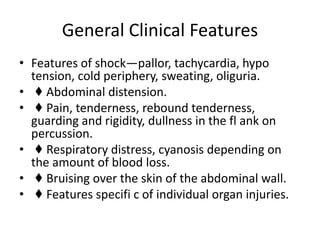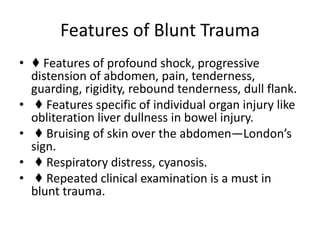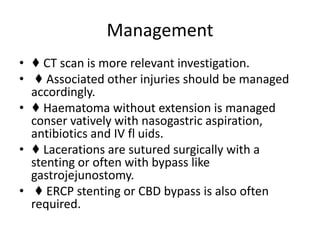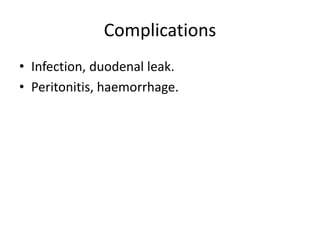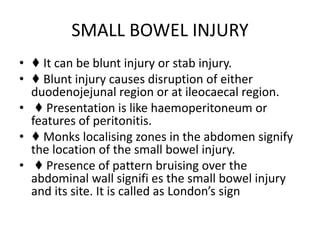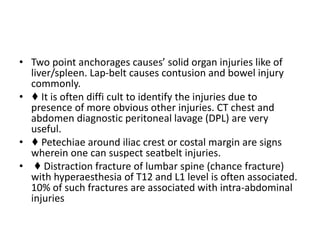Abdominal trauma can result from blunt force, stab wounds, or penetrating injuries. Diagnosis is challenging as the patient may be unconscious, and other injuries can distract from abdominal issues. Investigations include ultrasound, CT scan, diagnostic peritoneal lavage. Laparotomy is often needed for significant injuries such as liver laceration or small bowel perforation. Management depends on injury type and severity but may involve organ resection, suturing, or drainage. Complications can be serious if not addressed promptly.






